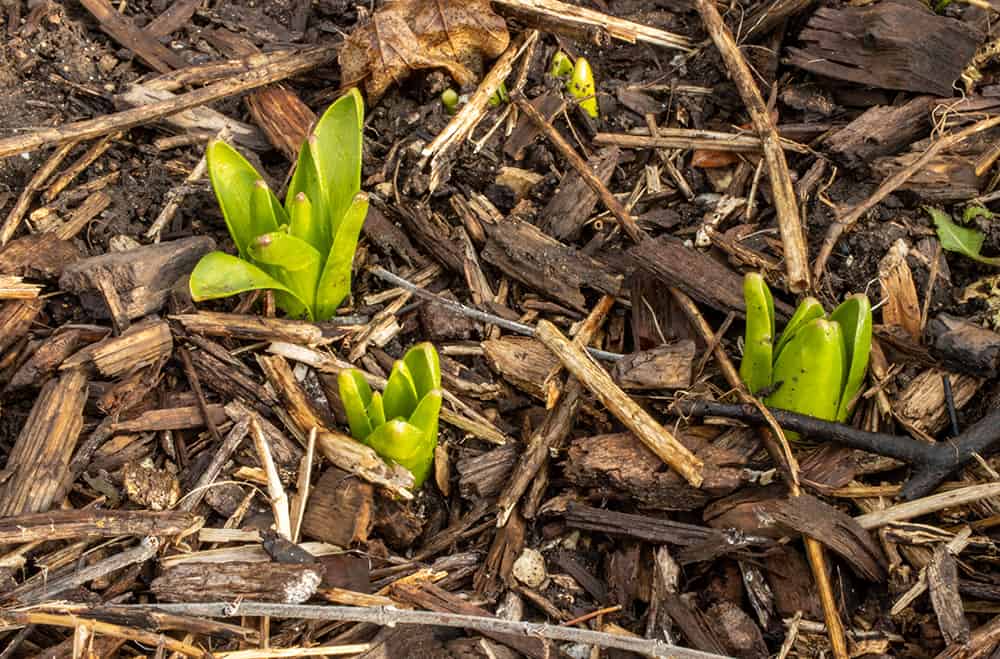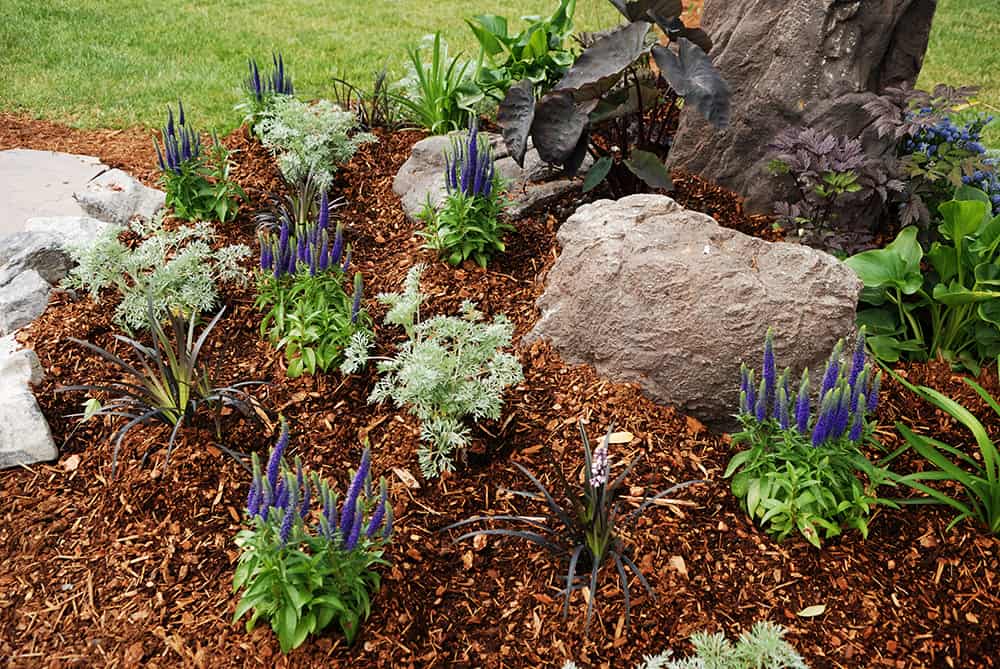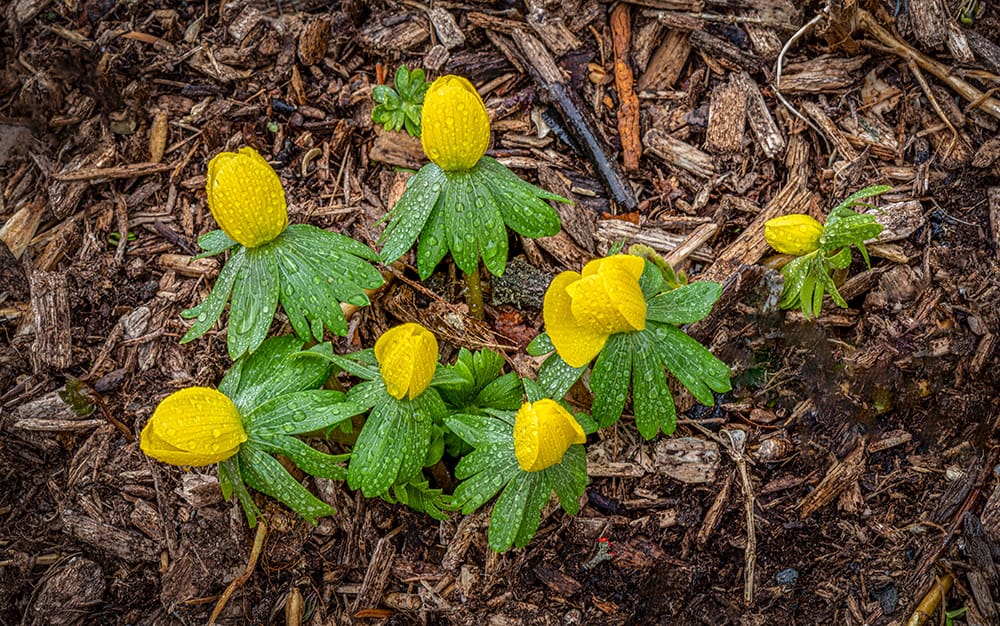
In order to protect plants from weeds and pests, mulch is spread over the soil in their vicinity.
In the garden, mulching has numerous advantages, but can you plant after mulching?
Planting over mulch can be accomplished by removing the necessary amount of mulch, exposing the soil, and digging a 3 to 4-inch-deep hole. The addition of new plants over mulch will aid in preventing erosion caused by persistent rain and the fading of the mulch caused by direct sunlight.
In this article, we’ll go through the various considerations to make while planting after mulching and the advantages it may offer.
Here is a good solution that I have tried and tested that is reasonably priced if you need to replace your old mulch.It’s located right here!
Table of Contents
Is It Ok To Plant After You Mulch?

The basic components of mulching covering are straws, plastic sheets, or bark chips. It lessens water evaporation and protects plants from adverse conditions like winter root freezing.
Organic mulches promote the development of good soil worms and microbes.
Planting on top of mulch reduces the impacts of erosion brought on by rain and sun fading.
The majority of gardening methods advise planting before applying mulch. For new places, this strategy works effectively.
If your garden is already established, no need to worry. You can also plant once the mulch has been laid down.
After mulching, the plant is planted by loosening the 3–4 inches of soil that is directly below it, setting it in the hole, and then covering the root ball.
Planting on top of mulch reduces the impacts of erosion brought on by rain and sun fading.
As the new plants can shield the mulch from heavy rains and erosion, planting in mulch that has previously been spread can also help to keep it in place when it rains.
For information on how to keep mulch from washing away, see our in-depth post.
Additionally, mulch exposed to sunshine may suffer effects. The UV radiation will quickly discolor the mulch and generate unwanted heat, both of which could hasten the rate at which the mulch decomposes.
Can Old Mulch Affect New Plants?

Most of the time, old mulch does not hinder plant growth. You can wait until a degradation or decomposition is evident.
Its alteration could be brought on by fungus growing inside of it or unhealthy plants surrounded by mulch.
When old mulch is overwatered, a hard cake-like surface develops.
Due to incorrect decomposition, plants retain too much water and air. They choke as a result of this.
A “volcano” effect occurs when there is an excessive amount of mulch surrounding the plant.
The bark receives direct water from volcanoes. Water suffocates the phloem after it enters the plant bark. As a result, the plants receive less food and water.
In the end, the plant dies prematurely and sheds its leaves.
Fluffing old mulch will be a fantastic alternative if you want to combine new mulch with the existing one. It won’t build up or hold water if done this manner.
Can you plant over old mulch?
Yes, you can, however, it works best if you mix it into the soil and add new mulch after planting.
As long as it isn’t contaminated or degraded, old stuff can still be useful. Mulch is reusable to promote wholesome plant growth.
Simply look at your soil and evaluate its state because this will help you determine how much organic matter and additives it might require to stay healthy.
To assist boost the organic matter in the soil, old mulch can be added. In addition to creating a healthy soil structure and improving drainage and aeration for the roots of the plants, the aerobic breakdown of the mulch by the bacteria and microorganisms will enrich the soil with beneficial nutrients for the plants.
Depending on the state of the soil and the population of microorganisms, this procedure typically takes between two and six months.
Compost can also be added to vegetable garden beds or beds for annual flowers. Till it into or under the ground. You can now reapply old mulch to the planting bed.
Check out our in-depth post on adding used mulch to soil.
Should You Plant Before or After Mulching?
Should you plant after or before applying mulch? The quick response is both.
Depending on the plant and soil type, different methods should be used. For instance, when the soil has been improved with compost, other organic matter, and other beneficial additives, some plants, such as shrubs and perennials, should be placed into a mulched bed.
These plants thrive in soils that have been designed with nutrient pockets so that roots can easily access them.
In fact, it is best to plant a tree in a freshly mulched area since the tree will benefit from extra nitrogen provided by the decaying mulch, which will aid in the development of strong roots.
But for the majority of plants. In every aspect, planting before mulching is preferred. It would be difficult to dig out the hole and plant a plant after mulching.
For gardening, a mix of organic mulch and compost is ideal.
Around the plant, there should be a 3–4 inch layer of mulch.
Less mulching will have less of an impact on preventing weed development and preserving moisture levels than the recommended depth. Mulch that is buried too deeply will smother plants with moisture and air.
If the soil is overmulched, plants like peony won’t be able to flourish. Mulch must be applied carefully.
Note: After mulching the space around perennials or bulbs, plant them. The mulch will prevent the young plants from drying up too rapidly in the intense summer sun.
Additionally, it will help to control weed growth until the new plantings reach a size that is competitive.
Can You Plant Flowers in Mulch?
Even if you’ve already applied mulch to your garden, you may still make changes based on your preferences because it has more advantages for the flowerbed than just a pretty appearance.
It aids in lowering evaporation-related soil moisture loss.
In hot weather, certain flowers do require a lot of watering. It retains water and keeps the soil moist, hence reducing excess water.
Mulch offers the necessary assistance in protecting roots from high temperatures. Mulch also prevents weed competition for nutrients, which helps a bloom grow healthily.
Types of Mulches:
There are primarily two types of mulches employed;
Organic Mulches:
Mulches made of organic materials are essential in every garden. These mulches are constructed of dried leaves, grass clippings, straws, and other organically grown and processed plants.
By incorporating organic matter, holding moisture, limiting erosion, minimizing weed growth, nourishing the soil, enhancing soil structure, boosting microbial activity, and preventing the long-term loss of soil fertility, organic mulches aid in the development and maintenance of healthy soil.
Inorganic Mulches:
Man-made materials called inorganic mulches are utilized to cover the soil. They control weed growth, maintain moisture levels, and allow soil fertilizers to release gradually in the area around a plant’s roots.
They also assist maintain a constant soil temperature, control how much sunshine a plant receives, and improve soil structure.
These are more expensive but also heavier and denser. Don’t let the plant move or grow quickly. Examples include crushed rock and shredded rubber.
The granite layer might be one to two inches thick and is effective.
Method For Planting a Flower:
You can grow flowers using the same procedure as plants. Just leave 1-3 inches between the flower stem and the mulch.
Will Plants Grow Through Mulch?
Mulch will not hinder plant growth. However, the growth is influenced by the kind and state of the mulch.
The double-cropping effect can be achieved using plastic mulches without any reduction in annual yields. Warm-season vegetable crops flourish best when covered in clear mulch.
Numerous studies from the American Horticulture system demonstrate a rise in organic production when various mulches are used.
The mulch layer, on the other hand, can slow the growth of plants like weeds. The germination rates of weed seeds are decreased by a thick layer of mulch.
When it comes time to remove it, plastic and cloth mulch might be a pain but can be highly successful at keeping weeds out of the garden.
To learn how to remove mulch made of landscape fabric from soil, see this article.
The Takeaway
Mulching is important and advantageous for plant growth. Both before and after mulching, you can plant. For best effects, the kind of mulch utilized and its depth are very important.
Mulching can speed up planting and is a crucial component of organic gardening. In woodland gardens, where it facilitates plants establishing roots more quickly, it is particularly beneficial.
With a few unique techniques, you can grow beets, carrots, potatoes, and tomatoes all in the same bed.
